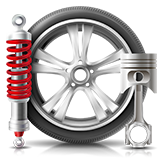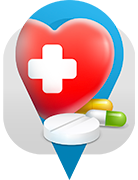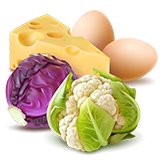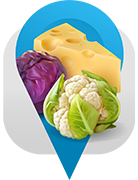-
-
Algeria
-
Australia
-
Austria
-
Bahrain
-
Belarus
-
China
-
Dominican Republic
-
Egypt
-
France
-
Germany
-
Grenada
-
Hong Kong
-
India
-
Indonesia
-
Isle of Man
-
Israel
-
Italy
-
Jordan
-
Kazakhstan
-
Kenya
-
Kuwait
-
Kyrgyzstan
-
Lebanon
-
Malaysia
-
Montenegro
-
New Zealand
-
Nigeria
-
Oman
-
Pakistan
-
Philippines
-
Portugal
-
Qatar
-
Russia
-
Saudi Arabia
-
Serbia
-
South Africa
-
Spain
-
Thailand
-
Trinidad and Tobago
-
Tunisia
-
Turkey
-
Ukraine
-
United Arab Emirates
-
United Kingdom
-
Uzbekistan


Kenya Agricultural & Livestock Research Organization
Service types:
Description
Crops
About the Department:
Crop production plays an important role in Kenya's economic development as a major source of income, employment creation and saving on foreign exchange expenditure through import substitution. This sub-sector is a major occupation of the rural population and accounts for a large share of the total agricultural output. The Crops sub-sector provides national food and nutritional security and income generation through local and export markets. This sub-sector plays a significant role in the delivery on the Millennium Development Goals of reducing poverty and hunger, as well as meeting the aspirations encapsulated in various Kenya Government policy documents such as Vision 2030 (GoK, 2008) and the Agriculture Sector Development Strategy (2009-2014). Currently, the annual crop production stands at 6 million tons of food crops, 4.2 million tons of horticultural crops and 500,000 tons of industrial crops, all supporting 10 million households. Crop diseases, pests and weeds greatly reduce the potential of these crop categories in quality and quantity. Currently, losses due to these constraints are estimated at 40%. Efforts to increase production and reduce these losses take cognizance of the need to conserve the environment.
The crop sub-sector does not currently meet the country's demand for maize, wheat, rice and various horticultural and industrial crops commodities. Kenya continues to import large quantities of both fresh and processed horticultural products to meet the high demand for local consumption. In addition, 95% of the country's vegetable oils and 50% of fibre requirements are met through imports. In this regard, the generation of technologies to accelerate productivity, value addition and enhancement of competitiveness in the sub-sector is necessary for meeting the local demand and tapping into regional and international market opportunities. The future thrusts of the crop thematic area of research include the effective application of biotechnological techniques among others to address hasten the pace of crop improvement, value addition, food safety and solving difficult biotic and abiotic stresses. In crop health, attention will be focused on integrated pest management (IPM), including the use of bio-control agents and the establishment of a repository for pests and diseases.
Conduct, Promote, streamline, co-ordinate and regulate research with the objective to generate and disseminate crop information, technologies, knowledge and services that respond to client demands, for sustainable livelihoods.
Livestock
About the Department
The livestock sub-sector contributes over 30% of the farm gate value of agricultural commodities, about 10% of the national GDP and at least 50% of the agricultural GDP. The sector employs about 50% of the agricultural labour force. Domestic livestock also supplies the local requirements of meat, milk, dairy products and other livestock products while accounting for about 30% of the total marketed agricultural products. In the ASALs pastoralism, ranching and agro-pastoralism are practised. In agro-pastoralism, the farmers integrate crop and livestock production and crop residues form a significant proportion of livestock feeds.
Livestock comprises dairy cattle, goats, camels and beef cattle, small ruminants, non-ruminants, poultry and emerging livestock such as quail and rabbits. Milk production in the country includes 4.6 billion litres from cattle, 6.4 million litres from goats and 340 million litres from camels providing an important source of livelihoods to Kenyans.
Production constraints include low productivity, poor breed characterisation, inadequate breeding services, poor animal husbandry, inadequate extension and advisory services, inadequate feeds and feeding, disease challenges, high cost of inputs and poor access to markets and inadequate integration of industry players.
Research is conducted under the Department to address the constraints in the livestock sub-sector through the development of technologies which will:
1. Provide livestock of high genetic potential.
2. Improve feed availability throughout the year especially dry season feeding.
3. Come up with well-suited forage and fodder for the different production systems.
4. Develop disease control technologies.
5. Improve value addition of quality livestock products such as milk, hides and skins.
6. Integrate crop-livestock.
7. Develop effective traceability systems.
About the Department:
Crop production plays an important role in Kenya's economic development as a major source of income, employment creation and saving on foreign exchange expenditure through import substitution. This sub-sector is a major occupation of the rural population and accounts for a large share of the total agricultural output. The Crops sub-sector provides national food and nutritional security and income generation through local and export markets. This sub-sector plays a significant role in the delivery on the Millennium Development Goals of reducing poverty and hunger, as well as meeting the aspirations encapsulated in various Kenya Government policy documents such as Vision 2030 (GoK, 2008) and the Agriculture Sector Development Strategy (2009-2014). Currently, the annual crop production stands at 6 million tons of food crops, 4.2 million tons of horticultural crops and 500,000 tons of industrial crops, all supporting 10 million households. Crop diseases, pests and weeds greatly reduce the potential of these crop categories in quality and quantity. Currently, losses due to these constraints are estimated at 40%. Efforts to increase production and reduce these losses take cognizance of the need to conserve the environment.
The crop sub-sector does not currently meet the country's demand for maize, wheat, rice and various horticultural and industrial crops commodities. Kenya continues to import large quantities of both fresh and processed horticultural products to meet the high demand for local consumption. In addition, 95% of the country's vegetable oils and 50% of fibre requirements are met through imports. In this regard, the generation of technologies to accelerate productivity, value addition and enhancement of competitiveness in the sub-sector is necessary for meeting the local demand and tapping into regional and international market opportunities. The future thrusts of the crop thematic area of research include the effective application of biotechnological techniques among others to address hasten the pace of crop improvement, value addition, food safety and solving difficult biotic and abiotic stresses. In crop health, attention will be focused on integrated pest management (IPM), including the use of bio-control agents and the establishment of a repository for pests and diseases.
Conduct, Promote, streamline, co-ordinate and regulate research with the objective to generate and disseminate crop information, technologies, knowledge and services that respond to client demands, for sustainable livelihoods.
Livestock
About the Department
The livestock sub-sector contributes over 30% of the farm gate value of agricultural commodities, about 10% of the national GDP and at least 50% of the agricultural GDP. The sector employs about 50% of the agricultural labour force. Domestic livestock also supplies the local requirements of meat, milk, dairy products and other livestock products while accounting for about 30% of the total marketed agricultural products. In the ASALs pastoralism, ranching and agro-pastoralism are practised. In agro-pastoralism, the farmers integrate crop and livestock production and crop residues form a significant proportion of livestock feeds.
Livestock comprises dairy cattle, goats, camels and beef cattle, small ruminants, non-ruminants, poultry and emerging livestock such as quail and rabbits. Milk production in the country includes 4.6 billion litres from cattle, 6.4 million litres from goats and 340 million litres from camels providing an important source of livelihoods to Kenyans.
Production constraints include low productivity, poor breed characterisation, inadequate breeding services, poor animal husbandry, inadequate extension and advisory services, inadequate feeds and feeding, disease challenges, high cost of inputs and poor access to markets and inadequate integration of industry players.
Research is conducted under the Department to address the constraints in the livestock sub-sector through the development of technologies which will:
1. Provide livestock of high genetic potential.
2. Improve feed availability throughout the year especially dry season feeding.
3. Come up with well-suited forage and fodder for the different production systems.
4. Develop disease control technologies.
5. Improve value addition of quality livestock products such as milk, hides and skins.
6. Integrate crop-livestock.
7. Develop effective traceability systems.




















































































User's comments